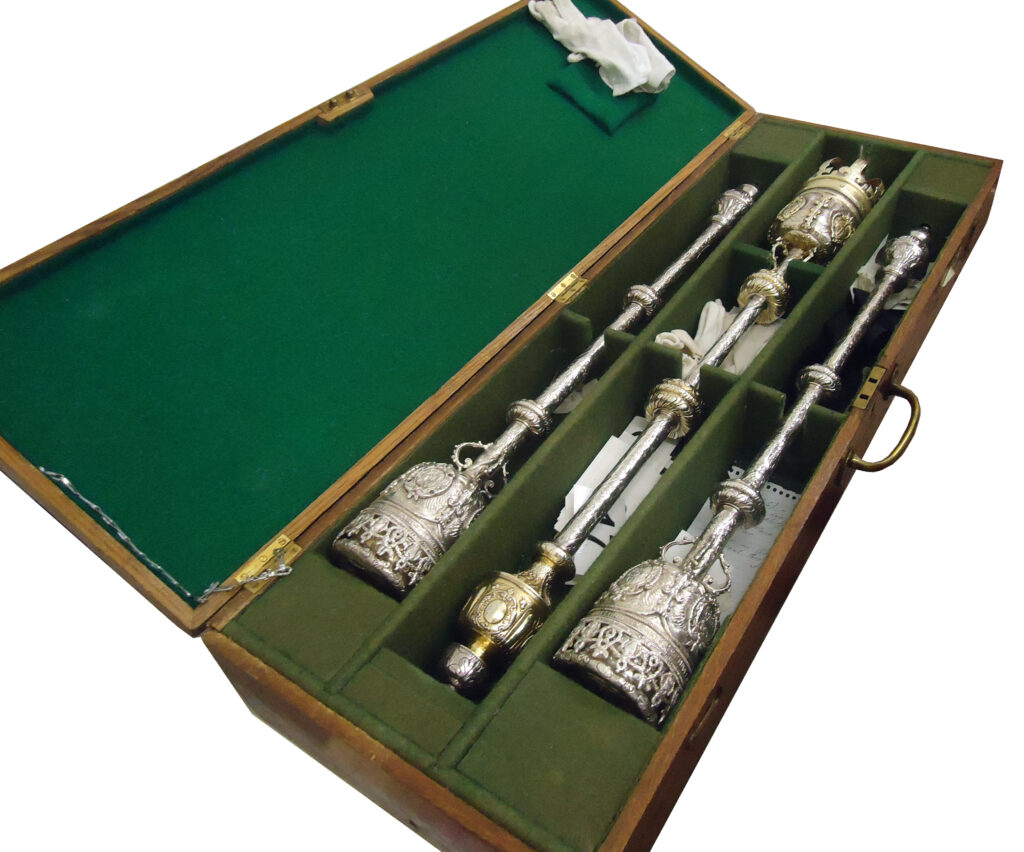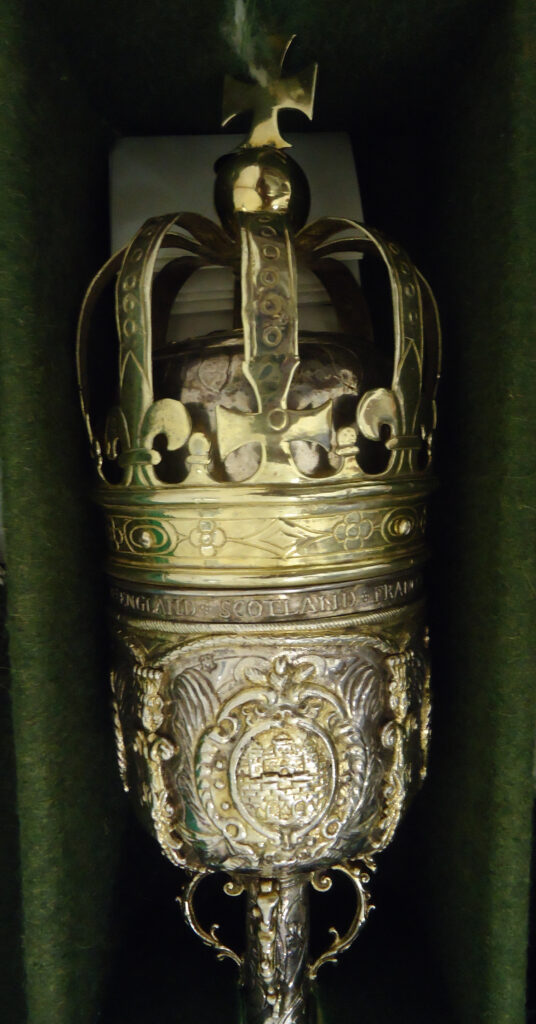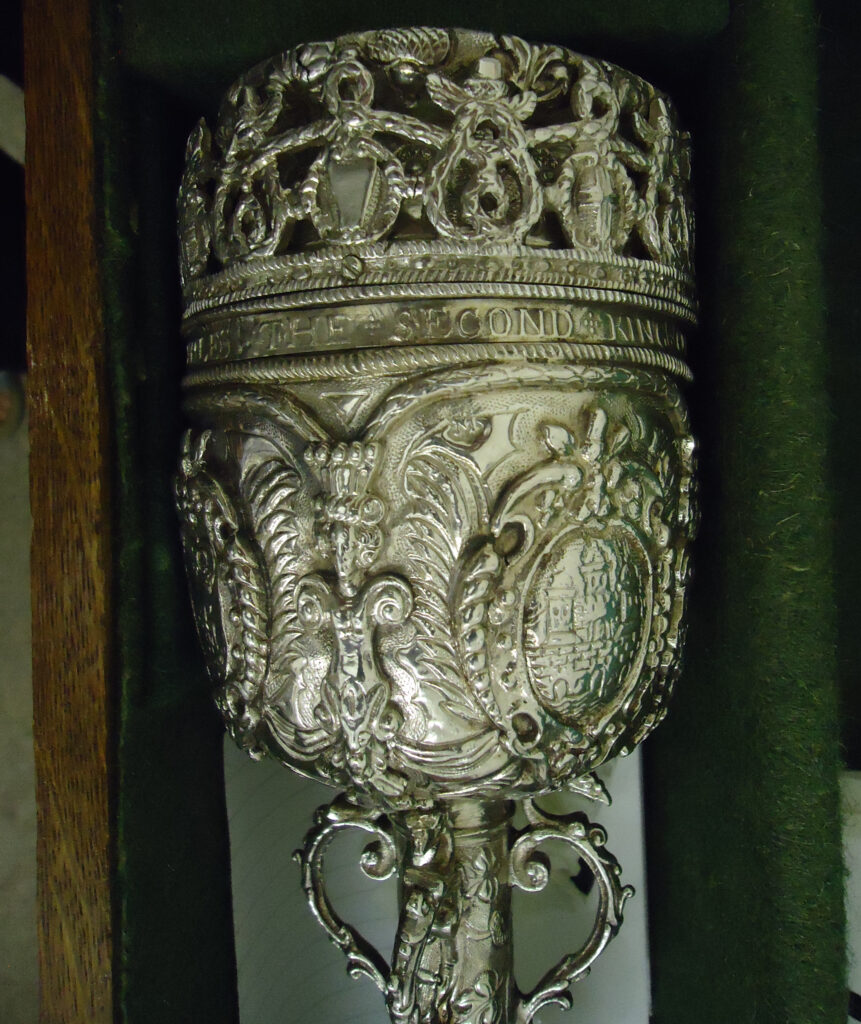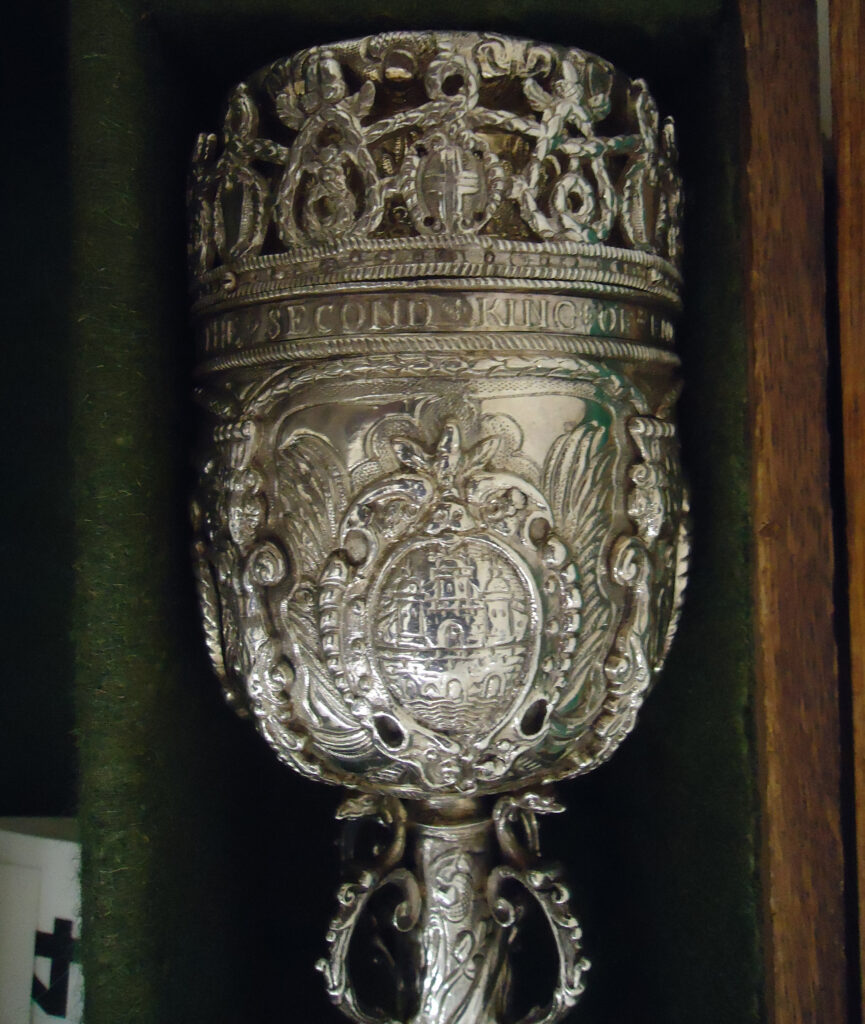Ceremonial maces emerged in England a little before the time that Bridgwater was founded in 1200. Essentially Sergeants-at-Arms, armed with a mace, would parade before the king, as a show of strength and protection, but also to signify their status as favoured bodyguards. Over the next century the weapons became more decorative in appearance , to the point that they ceased to resemble weapons. They were soon also adopted by towns, as symbols of authority and splendour. The oldest surviving civic mace belongs to Hedon and dates to 1415. Bridgwater was almost immediately part of this fashion.
The first mention of Bridgwater possessing a mace comes in the town’s accounts for the year covering Michaelmas 1440 to 1441, when ‘a broken mace’ was sent for repair, which cost 8 shillings and 4 pence. In the following year’s accounts we see another bill of 7 pence ‘for repairing the common mace’ (Bridgwater Borough Archives, vol.3, nos 703, 711). We find further detail in the accounts for the year 1444-5, when 5 shillings and 4 pence were paid ‘for silver to mend the silver mace belonging to the town’ (Bridgwater Borough Archives, vol.4, no. 728). Quite why it needed to be repaired so often is a puzzle. although it at least implies frequent handling and use.
In 1647 the mace ‘of Stephen Harris’ (the name one of the town’s sergeants) was sent for repair. A brand new mace, the largest one to survive today, was commissioned in about1647 from Thomas Maundy of London, his brief to make it ‘better than ordinary’, although the town took its time to pay his bill, much to his frustration. In 1654 the old medieval mace was sold off in Taunton. From its sale two new maces were purchased. This was all during the time of Oliver Cromwell’s Republican regime, so all three maces had to be sent away in 1660 to have the Commonwealth symbols removed and the royal arms added, once Charles II re-took the throne (Lawrence, History of Bridgwater, 107-8)

MKP 24 December 2020




